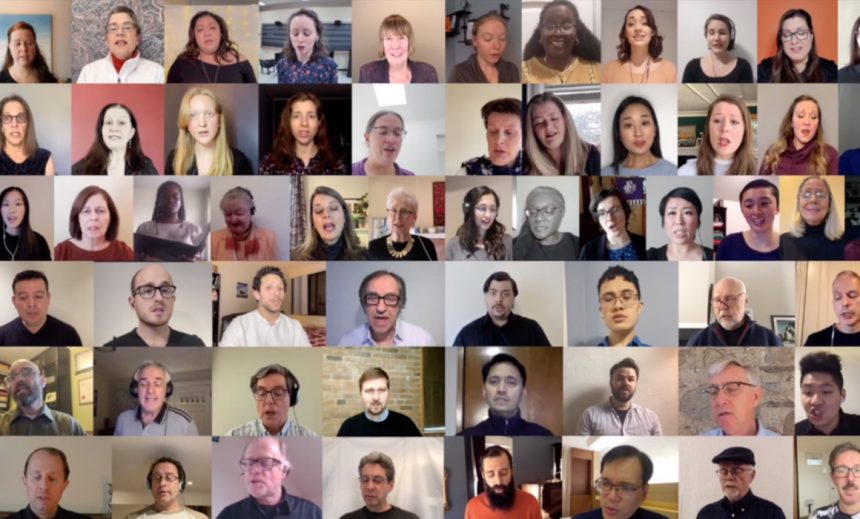Ken Stephen, Large Stage Live!
The Toronto Mendelssohn Choir has for many years now commemorated Good Friday with a concert entitled “Sacred Music For a Sacred Space,” traditionally given at St. Anne’s Anglican Church in Toronto.
While continuing to offer at least a partial version of such a programme in virtual form in this age of pandemic, the Choir once again demonstrated great imagination in launching out into a hybrid arts event which was plainly designed, from the ground up, for online presentation.
Indeed, the programme as we saw it on Good Friday evening simply could not be presented in the same way in a live venue.
In brief, the instrumentalists were recorded under all pandemic regulations then in effect in St. Anne’s, the choir members each recorded themselves individually at home, and the whole programme was then assembled in a virtuoso feat of editing.
After a very brief spoken introduction, and a land acknowledgement, the programme opened with Schubert’s sad yet mellow Stabat Mater in G Minor, D.175 (not to be confused with the longer F minor setting which he composed the following year). The Latin sequence meditates on the Virgin Mary, as she stood at the foot of Christ’s cross on Calvary. Schubert set the first four verses in a smooth stream of music, varying his thematic material with no break in the flow.
The fifty choristers who participated in this recording gave the music with clarity and beauty of tone while capturing the ritual feeling of the work, which was most likely written for liturgical use. Pianist Gergely Szokolay provided a subtle, finely shaded account of the accompaniment, originally written for small string orchestra with trombones — and, frankly, I didn’t miss the orchestra at all (the young Schubert’s orchestration was often blandly conventional to a fault).
This music was accompanied by images of paintings from different centuries, images which in some cases overtly depicted the scene at Golgotha and in others invited us to think of suffering in a more human, contemporary context — a very thoughtful visual counterpoint.The major offering was Bach’s early cantata, Christ lag in Todesbanden, BWV4. It’s a unique work in many ways, relating to form, musical style, word painting and more — but most of all because this early cantata, with its seven choral or vocal movements in succession, is written entirely in E minor.


